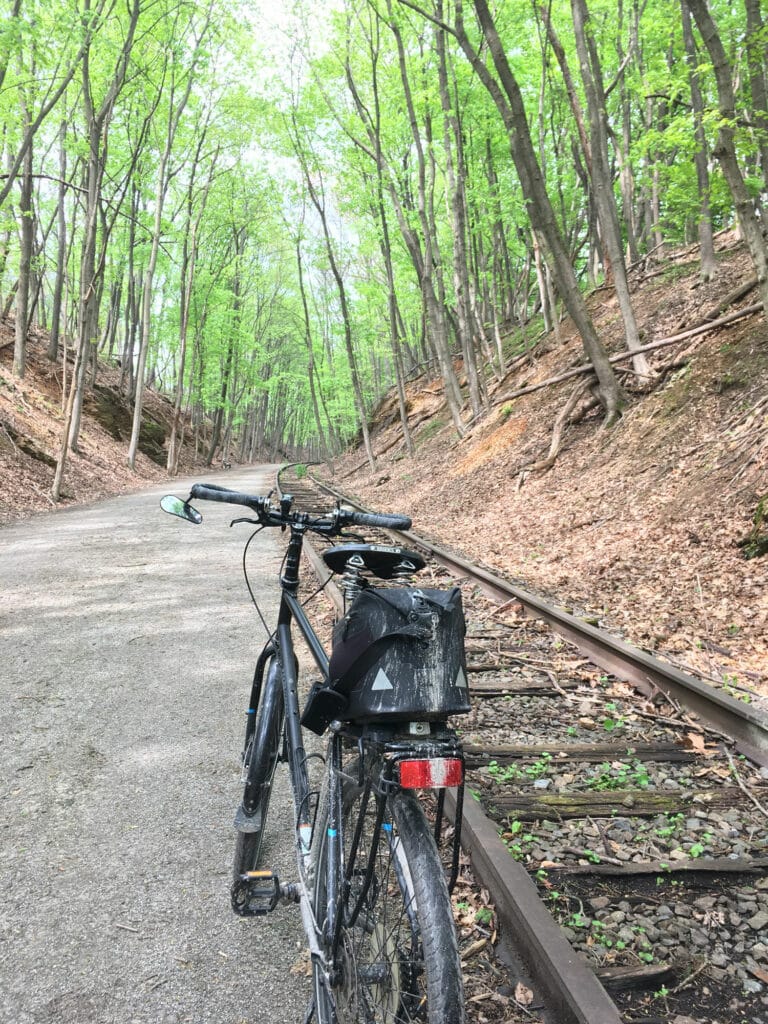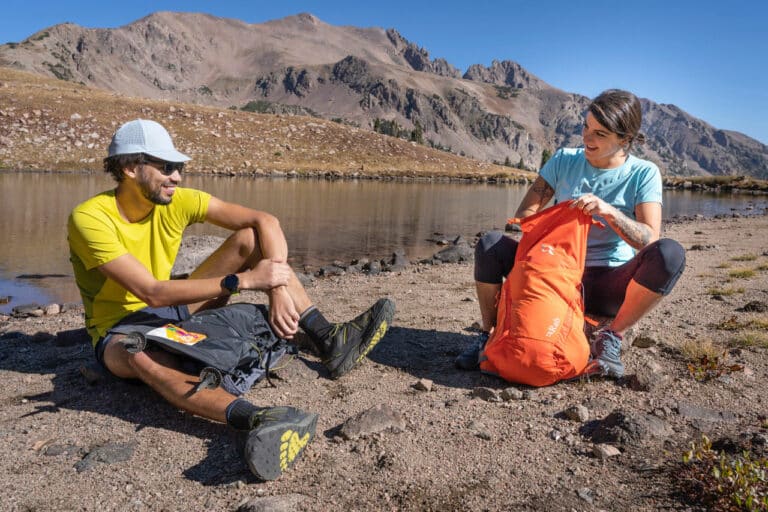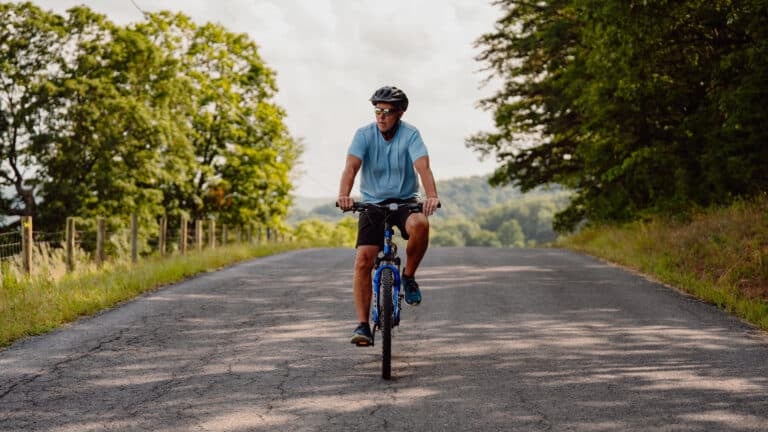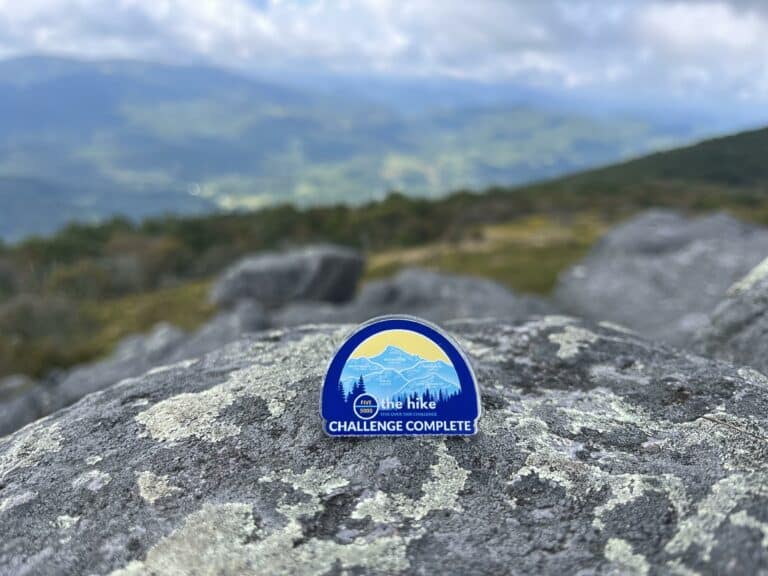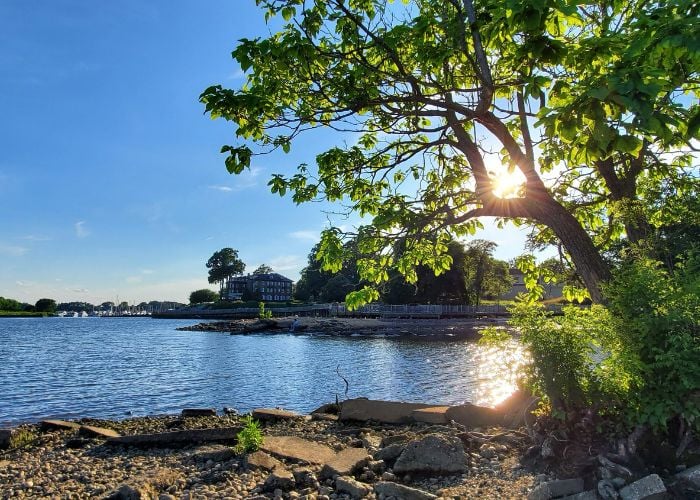The open water swim-we’ve all been afraid of it at some point. You worry about what’s in the brown murky water. You’re spooked about completing the distance without a wall to hang on. You also imagine folks kicking or hitting you.
There’s no better way to dispel these fears than to practice in open water. Many parks have an area set aside for doing laps and it’s usually cordoned off by floating lines. You might excel at banging out pool laps, but getting off course negates that in a lake. Open water causes even the best swimmers to waste time and energy. There’s no black line to follow as in the pool.
Here are five helpful hints to help you face your fears and improve your open water swimming:
1. Swim straight: It also helps if you, and those around you, swim in a straight line to the marker, usually an orange/red buoy. I use a buoy sighting technique that entails taking a peek every 10-12 strokes down the left arm as it’s extended in front. I cock my chin up, without twisting my neck, and look down the arm at the target. I get a quick look and then drop my chin down as my right arm hits the water. This keeps my head low in the water. Don’t lift your entire head out of the water, or worse, doggy paddle to see the marker, or let your feet drag in the water. That kills all forward motion, creates drag, and zaps energy. Whatever technique you adopt, use one that keeps your head from lifting up or being unaligned with the body. Preserve your forward motion.
2. Go the distance: Many first-time triathletes fear not making the distance and getting into trouble in the middle of the lake. Do enough training and get enough help with your stroke so that you feel comfortable doing the distance, first of all. Then, learn to swim on your back and breathe comfortably for a few strokes. If you get into trouble in the race, switch to your back and swim a few seconds to catch your breath. If you’re still beginning to panic, abandon the race and flag down one of the volunteers on the kayaks.
3. Position properly: For the start, if you’re a new or poor swimmer, start in the back. If you’re a decent swimmer, position yourself on the edge to avoid the fray. You’ll swim a slightly longer distance, but you’ll be away from the thrashing in the center.
4. Count the buoys you need to pass: Use that number as your mental trick. For example, “Here’s bouy #3, I’ll go a little faster to #4.” Pick something stable behind each buoy, like a white house or big tree, as you swim towards it. Line up the bouy with the object behind it and that will define a straight line. Every 12 strokes or so, make sure you’re still lined up.
5. Save your energy: Nothing messes up your race like sprinting at the very beginning of a swim. Sprinting the first 200 meters of the swim hurts your run at the end, since you’re burning up carbohydrates needed later. Instead, get into a good cruise rhythm and stay strong but steady. About halfway through the swim, begin to swim more strongly by pulling more water and kicking a little more, that’s when you can push your pace up to sprint exertion.
Still fear what’s in the dark water? When a few hundred of your closest friends start creating chop, all the critters leave, believe me!
<em>
Tre’ Harris is founder of the Charlottesville Triathlon Club: cvilletriathlete.com.
</em>
